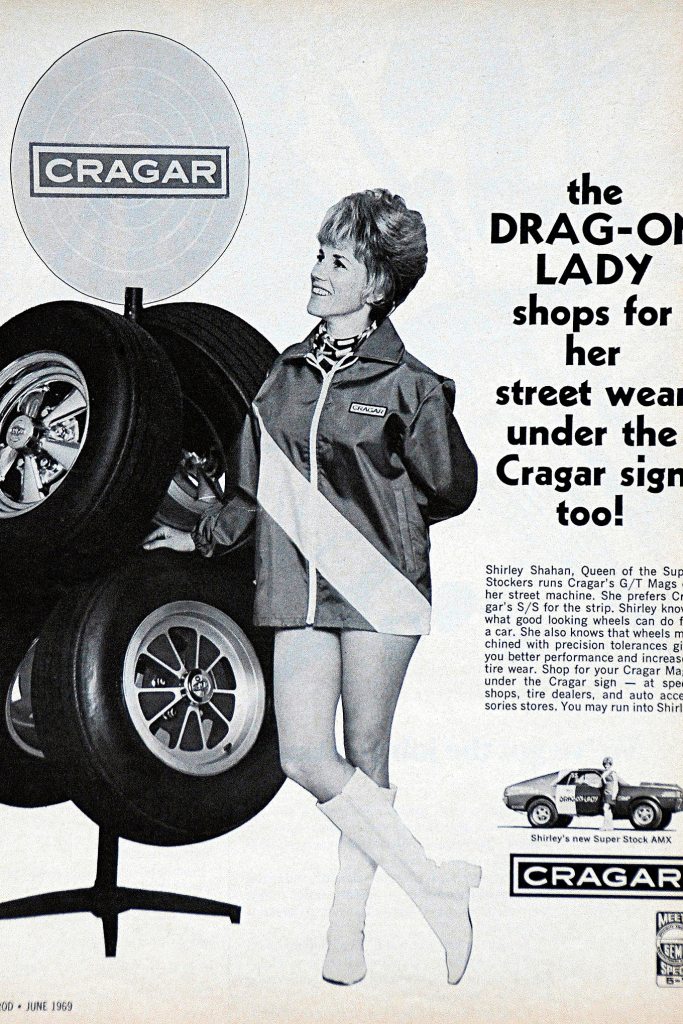
I have a gallery wall in my dining room. Not the kind that most people have; photoshoots they’ve had done with their family in a random apple orchard, some ‘live, laugh, love’ quotes scattered amongst pictures of the dog and baby scans. Ours has adverts cut out of 60s drag racing magazines, press shots of drag racers, art we’ve commissioned of our cars over the years. Included on the wall are some of my favourite female drag racers too; a press shot of Shirley Muldowney, Paula Murphy and her Houndog Funny Car, Shirley Shahan in a Cragar advert and Carol ‘Bunny’ Burkett on an advertising poster.
In Bunny’s poster, she is stood next to her ‘Cotton Pony’ 1968 Ford Mustang with a teased beehive that would envy Ronnie Spector, a mini dress that would make Mary Quant proud, and gogo boots that Nancy Sinatra probably wrote a song about. While highly impractical and unsafe for drag racing, they got the message out there, that the MISS UNIVERSE OF DRAG RACING pro stock series will be appearing at Dover Drag Strip in Wingdale, New York on Sunday, August the 13th.
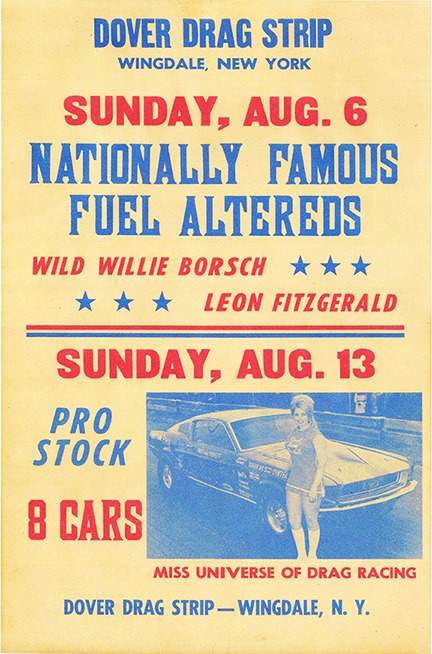
When I first heard of the Miss Universe of Drag Racing, I was fascinated. Here was a bunch of women, very serious racers, who were asked to wear go go boots and mini skirts between rounds, and advertised as a sort of ‘side show’ to the main event. I hated it and loved it in equal parts. The feminist in me wanted to scream that these women should be the main show, but the history, fashion and all round woman-lover in me adored it. Despite there not being much information out there on this touring Pro Stock series, I wanted to find out as much as I could about these women, and bring it all together in one place for the first time.

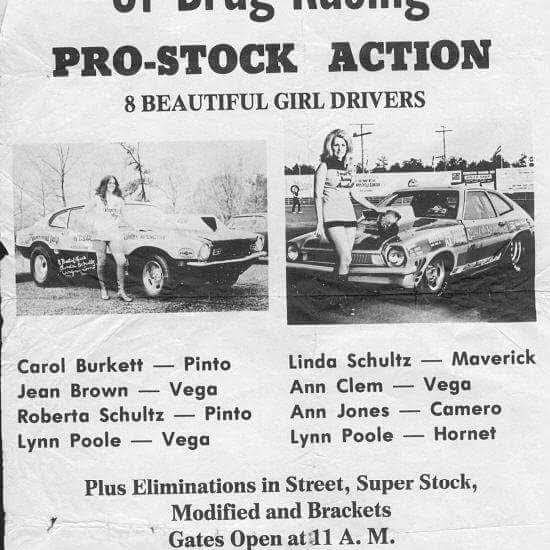
An Introduction to Powder Puff Racing Series
If I had to do a full history of women in drag racing, it would take me years, and that is not something I am either prepared or equipped to do. But perhaps we should start with a brief history of Powder Puff series drag racing.
Chris Lezotte PhD wrote about the history of Powder Puff in her chapter of Life in the Fast Lane: Essays on the History and Politics of Motor Racing. ‘Powder Puff’ is a term still used today in America and Canada to refer to separate ‘women only’ sports, mostly referring to American football. Of course the actual term powder puff refers to a soft pad used in cosmetics to apply powder to the face, first patented by Ellene Alice Bailey in 1882.
Lezotte writes that the term ‘powder puff’ began to appear in small-town newspapers in the late 1940s and early ‘50s to ‘qualify and single out women’s participation’. These special races (mostly at stock car racing at this point in history) were created in an attempt to address concerns that once women arrived at the track with their male partners, they were left on the sidelines with not much to do. Their roles were usually confined to the more ‘feminine’ jobs such as the cleaning of uniforms, and packing and distribution of picnics. *Commence collective eye roll*. Michelle Cabatingan writes in her article Race to Equality – History of Women in Racing in the Sports Car Digest that ‘the early events of SCCA treated women as less important than the cars in attendance. If women attended the events they were more likely portrayed as “eye candy” for the men.’
Pete Hylton, in his book The Gentlemen’s Club: The Growth and Transition of American Sports Car Racing, said that the “The other frequent role portrayed was that of a attractive pit-bunny supplying needed distraction from the rigors of competition or an obedient pit-wife supplying sandwiches or even faithfully holding the stopwatch or the pit board while their husbands raced by on the track”.

Joyce Passons, left, and Gloria Kaylor fight over the trophy that goes to the winner of the 10-lap Powder Puff Derby at the Fairgrounds Speedway. Other contestants include Shirley Baucom, Barbara Eli, Nancy Griffin, Jewel Vickers, Donna Akey, Shirley O’Conner, Bonnie Stillings, Dot Jenkins and Paula O’Neal. (Frank Empson / The Tennessean) 1967
The promoters feared that if women were merely relegated to the sidelines, they would lose interest and prevent their spouses from going to races, resulting in a lack of income from drivers and spectators who would not have much of a show to watch. Thus, women were encouraged to borrow cars from their male counterparts in order to compete with other women, as well as equipment and safety gear such as helmets and fire suits. Racing was expensive, and with little in the way of sponsors willing to put their money on a woman, they were forced to cobble together what they could from their partners and families.
A lot of these women participated more out of support for the men in their lives, as opposed to actual enthusiasm for racing. The majority of participants were inexperienced and wary at the thought of racing; Nancy Delp participated at the Reading Fairground powder puff race, and reminisced that she “had to use a sofa cushion so I could see out the window and once the race began, it was easy to realize that racing looks easier from the grandstand. It was fun, but once and done”.

Joyce Passons, Gloria Kaylor, Shirley Baucom, Barbara Eli, Nancy Griffin, Jewel Vickers, Donna Akey, Shirley O’Conner, Bonnie Stillings, Dot Jenkins and Paula O’Neal.
Some women of course had a genuine interest in racing, usually from being around husbands, fathers or brothers who wrenched or raced cars, or were motoring journalists themselves, such as Denise McCluggage who believed she was more equipped to report from behind the wheel of a car than from the press box.
Unfortunately, especially in the early days of racing, these powder puff championships were often presented as a special attraction rather than a serious series, and even a lot of the women felt that they weren’t in it to win trophies. Despite this, a number of female racers went on to do big things in the world of motorsports, and prove that they were serious competitors and were of course capable of competing against men.
After all, motorsports tends to be a level playing field and talents are not based on gender. It is often said that women actually tend to make better drag racers, as they have sharper reactions (whoever came up with that obviously hasn’t seen me race). One only has to look at European top fuel championships and how it is regularly dominated by female drivers. Any historical perceived downfalls of women in racing have mostly been from lack of sponsorship and bad press; ie. Janet Guthrie, who said in her interview with Cabatingan “after that Ninth place win, and the publicity I brought to the track, finding money for me would be falling off a log and it didn’t happen. I didn’t quit willingly, I ran out of money. I am reconciled to the fact that I wasn’t able to continue and set the kind of record that I know I was capable of setting and I will never be reconciled to that but that’s life you don’t always get what you want.”

All-female Ring Free Oil Driving Team at the 1967 Daytona 24 Hours. (L to R) of Suzy Dietrich, Donna Mae Mims, Smokey Drolet, Anita Taylor-Matthews, Janet Guthrie and an unidentified driver. (photo: Al Wolford Collection)
It wasn’t just stock cars, sports cars and open wheel racing that had powder puff championships. Drag racing had various female only series, and many female racers got their starts in such races. Carol Cox, the NHRA’s first female class winner, raced her husband’s Superstock Pontiac to a class victory in 1962, being described in an article by National Dragster as ‘the sport’s champion “powder puff” handler’. Pat Garlits, wife of the famed ‘Big Daddy, raced Don’s 413ci powered Super Stock Dodge in powder puff races herself in 1962. Even Shirley Muldowney raced a 1963 Corvette in a powder puff championship before taking the top fuel world by storm.


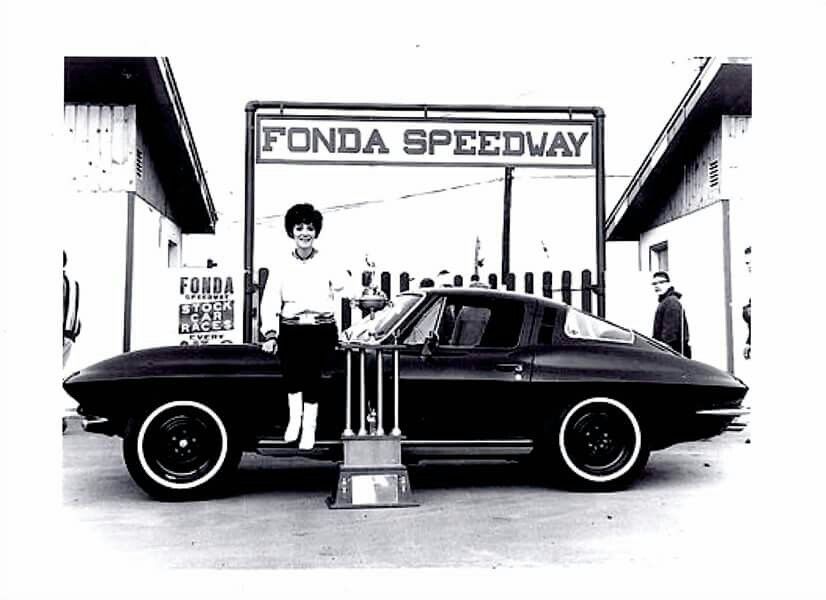
Miss Universe of Drag Racing
After seeing the success and popularity of Super Stock classes, the AHRA officially began the new ‘Pro’ Super Stock class in 1969, with the NHRA following suit in 1970. Pro Stock classes were seen as a great way for the big three auto manufacturers of America to promote their ‘muscle car’ line of street cars, with the old adage ‘win on Sunday, sell on Monday’ being the key premise behind both Super Stock and Pro Stock. Pro Stock is still an NHRA class today, but many fans will argue that the halcyon days of Pro Stock were the ‘70s and ‘80s.
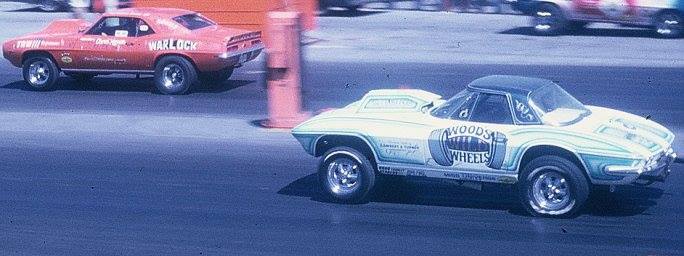

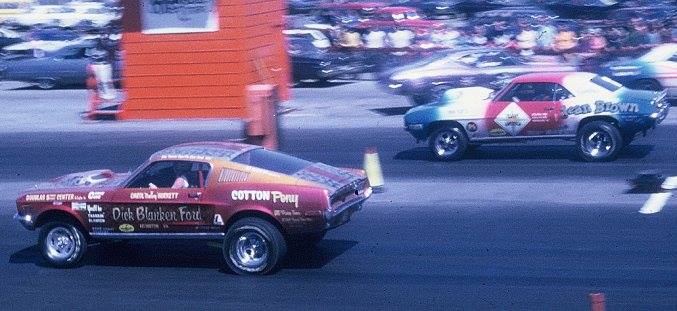
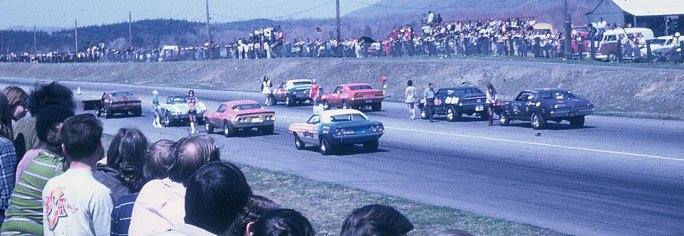
Miss America of Drag racing began in 1971, the brainchild of drag racing promotor Tom ‘Smoker’ Smith, with help from Taylor ‘Mousie’ Brown who managed the events at the track. Tom raced early funny cars (including his ‘Smokerruda’ Barracuda), but was more well known for his promotions, including the East Coast Fuel Funny Car Circuit.
The name ‘Miss Universe of Drag Racing’ was also used interchangeably, presumably to open up opportunities to any extraterrestrials who felt they deserved an ‘in’ to the world of Pro Stock drag racing too. The name draws on beauty pageants, of which have a surprisingly long history dating back to medieval European festivals such as May Day, where a May Queen would be selected based on her beauty. The Miss Universe pageant began in 1952, and the powder puff circuit we’re discussing today obviously takes inspiration from the name. It shares themes of a gaggle of beautiful women vying for trophies, often in short outfits, with the hair and makeup to match.
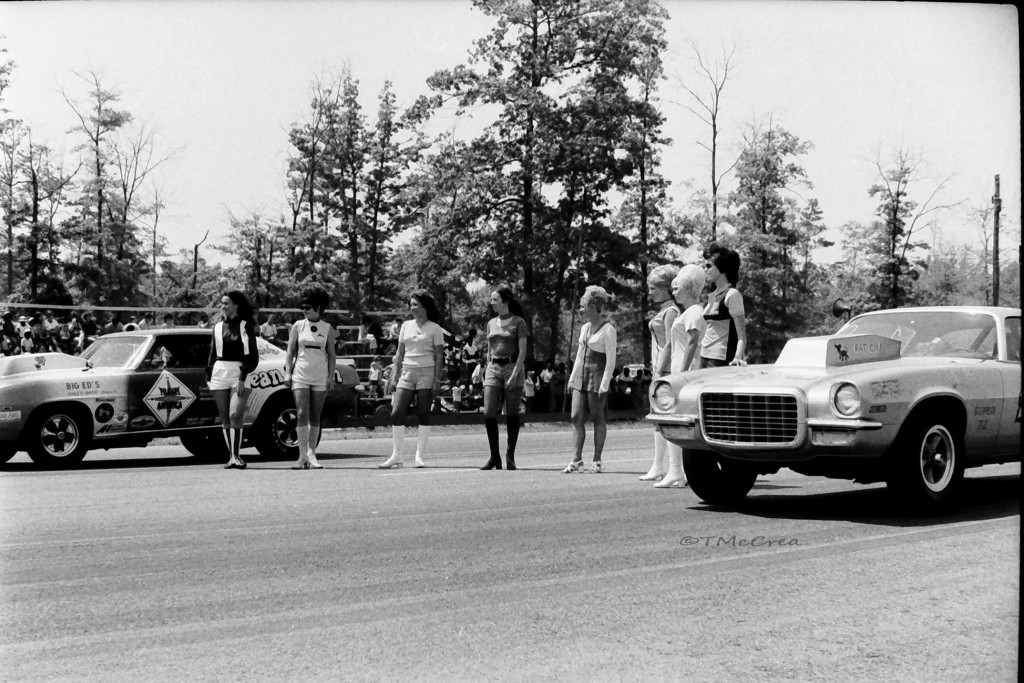
The first event in 1971 saw 8 entrants; Carol Henson with the ‘Warlock’ Camaro, Carol Kile with her ‘Family Affair’ Camaro, Fan Mellott with another Camaro named ‘Friends and Neighbours’, Carol Wood with her ‘Wood’s Wild Wheels’ Camaro, Jean Brown (wife of the famous Mousie Brown) with the ‘Rainbow’ Camaro, Nancy Wilson in an unnamed GTX, and Carol ‘Bunny’ Burkett who borrowed a SuperBee from Sidney Sesson after her Cotton Pony Mustang blew the engine. Lastly, Linda Shartzer attended with her ‘Sinbad’ Mustang, it being noted that she was the ‘only bachelorette in the octet’, quite unusual for the scene at the time I’d imagine. Henson took the win, beginning a running theme over the next three years, winning points that could culminate towards a holiday in Puerto Rico.

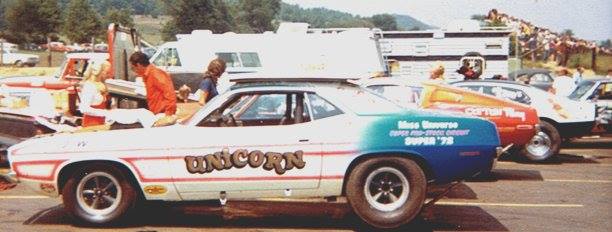



The March 1971 issue of Drag Times said of the first event: ‘The versatile Smith has lined up eight of the loveliest young ladies in drag racing to compete in the new circuit. As if the beautifully painted and lettered super stock cars were not enough, the drivers appear in fashionable mini-skirts, which certainly adds to the program. ‘Nuff said. If their first outing is any standard, this could well develop into the top drawing card on the eastern strips.’
When I spoke to Carol Henson, she said that some tracks instigated ‘hot pants competitions’ to coincide with the circuit’s appearances. Carol said “we did dress up with the boots and tennis style outfits which were the style at the time. I made my own outfits.”
One article wrote; ‘as the cars were called to the line for the first round each of the girls stepped from their cars at the starting line to be introduced to the spectators. The crowd (the men at least) went wild as each of the drivers were dressed in wild mini hot pants uniforms.’


The racing was originally heads up but from some articles it seems that bracket racing was also done at some stages. In a ‘Smokers Promotions’ pamphlet for the 1973 season, Smith wrote ‘the lovely gals will be back with an all-new program with no rules except safety items with cars to meet SEMA Codes’.
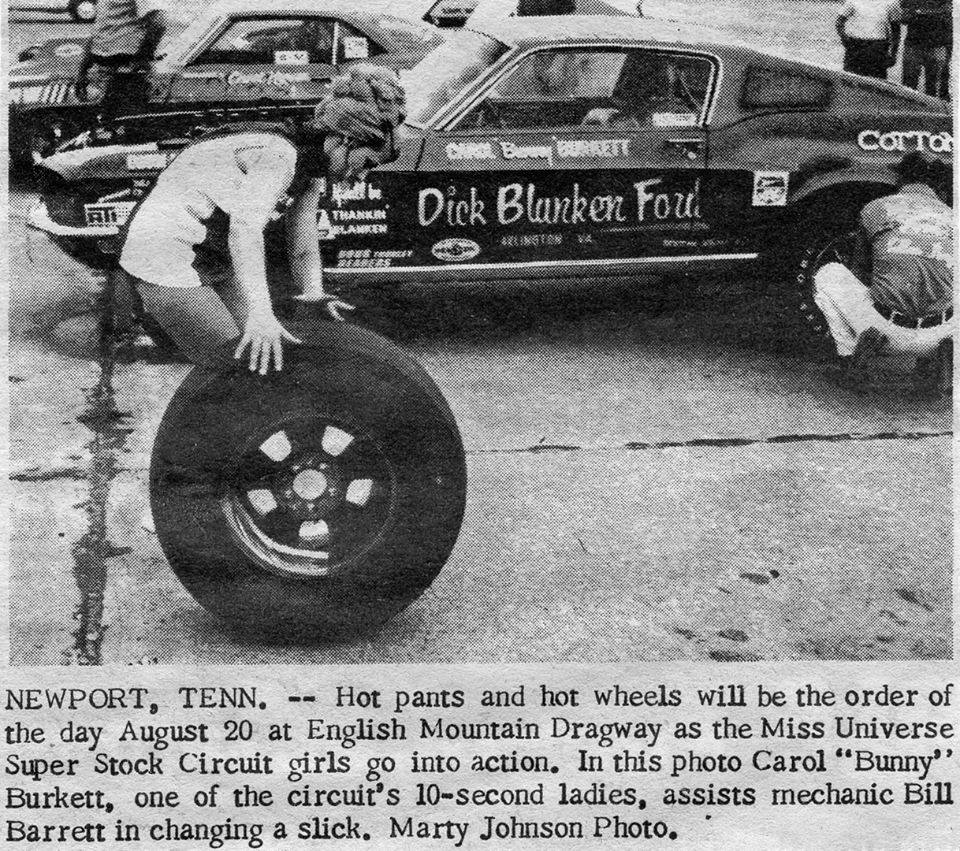
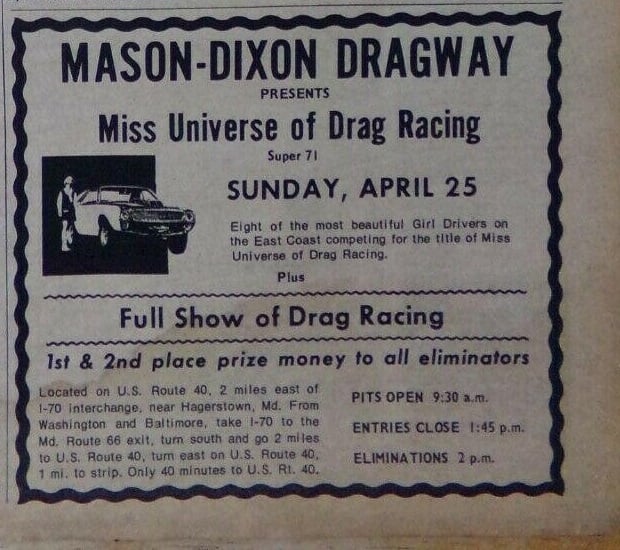
Despite the mini skirts and hot pants, or possibly because of them, the circuit seemed very popular amongst both spectators and reporters, and Drag Times and other news outlets at the time gave column inches to the women after each race. One article said ‘the girls proved tonight that they are not the weaker sex when it comes to drag racing as a better heads up show could not have been possible with their parade lap, neat appearance and close runs kept the spectators spellbound on every run’ after Bunny Burkett won one event with her ‘Cotton Pony’ Mustang.




Carol told me about her time racing her ‘Warlock’ ZL-1 Camaro. She started off racing in 1968 in D/MP with a ’66 Corvette, so by the time she joined the Miss Universe circuit she had 3 years of professional racing in competition and stock eliminator under her belt. The Warlock Camaro was one of 100 made, with an all-aluminium 427ci big block motor with racing in mind, complete with forged crank, rods and pistons and a solid lifter camshaft.

She said that the racing in the class was extremely competitive, and that a big deal was made out of the rivalry between her and Bunny Burkett which originated years earlier racing at the same local tracks. Despite this, any fighting talk in the pits was only for publicity purposes!
When I asked her if it felt like she was part of something special at the time, she replied that… no, not really! “Now it appears unique, but I was into racing and getting paid for it more than a beauty contest. In retrospect that was probably a mistake. I was always a racer first and my accomplishments were later over shadowed by those who played up my femininity first. I was not really aware of breaking stereotypes at the time. Now, however, looking back it was a really good thing as fans seemed to like it.”


Another driver I spoke to, Linda Curtis (Linda Shartzer at the time) drove the Mach 1 Mustang ‘Sinbad’ in the circuit. She told me how she got into racing through her husband and his best friend Bill Hawk. Hawk had an injury to his leg, so she told me “he had asked me if I would consider driving Sinbad, which I thought would be a blast. So it began, my training didn’t last long! I have a husband and brother who are into it, so I guess it’s in the blood!”

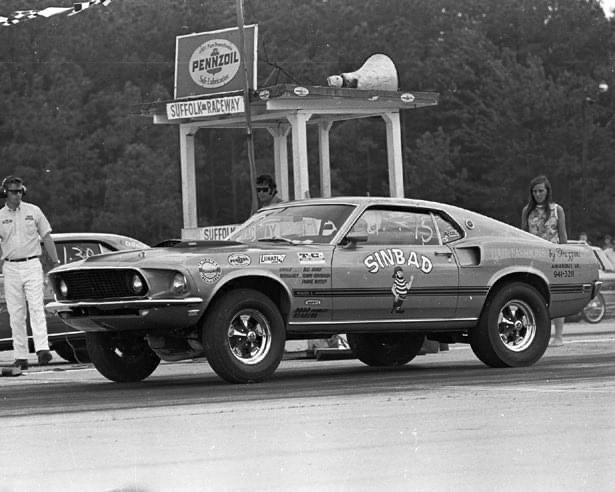
She also told me about her sister-in-law, Lynn Poole; “several years later, my brother Richard Gioielli also raced his car. His nickname was Rabbit, so the car was ‘Rabbit Habbit’. At the time his wife Lynn drove.”


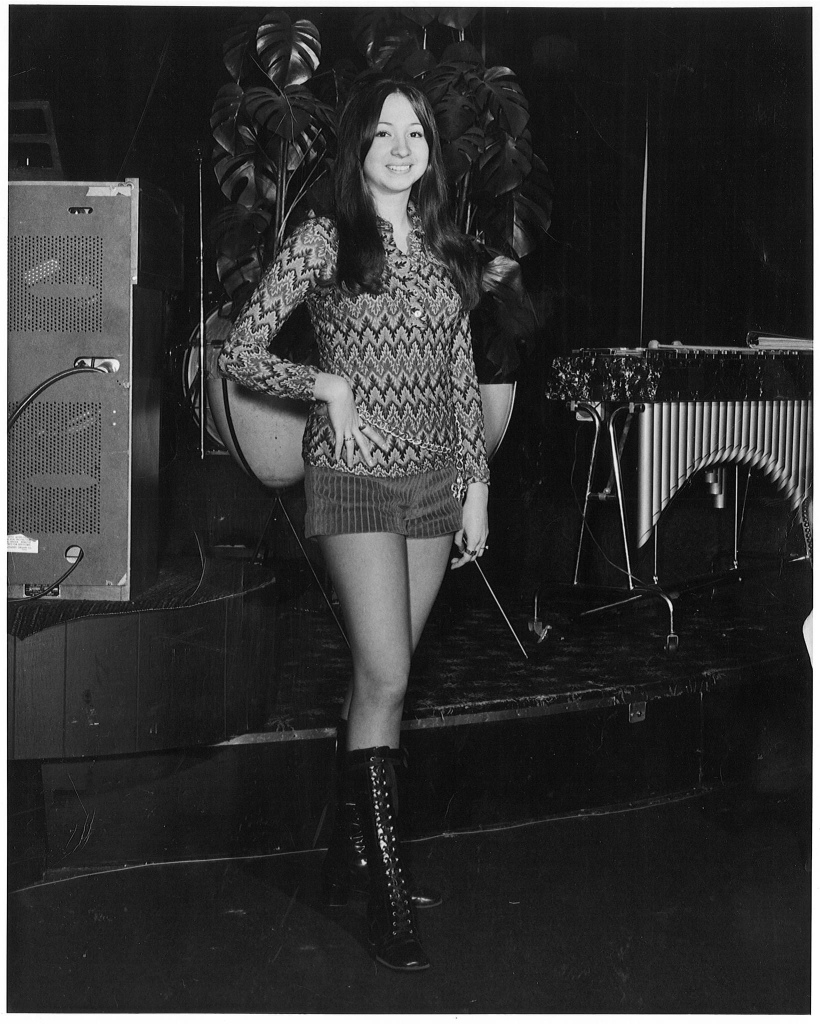
The Miss Universe of Drag Racing went on for several years, until at least 1974, where it seems that the reports go cold, at least in my research. Pro Stock, of course, continued and is still a popular manufacturer VS manufacturer class today in NHRA.
A Legacy of Speed Queens
So what is the legacy of these women? Some went on and continued their careers in drag racing; Carol ‘Bunny’ Burkett continued racing until the ‘90s, venturing into top alcohol and funny cars, and attending reunions and other drag meetings until her death in 2020. Carol Henson won the annual points for the three years that she was part of the circuit. After leaving the Miss Universe of Drag Racing competition, she stepped up to alcohol funny cars, which she said was a lot more challenging, becoming the first NHRA licensed female Top Alcohol funny car driver. She had 7 funny cars between 1973 and 1994, primarily racing in NHRA Division One in the Northeast. Her achievements include being runner up at the 1988 NHRA Summernationals at Englishtown, NJ, making six trips to Puerto Rico to race, and still holding E.T and top speed records at several tracks to this day.
All of this goes to show that Powder Puff drag racing series weren’t just for amateurs, or for the men to get their wives off their back while they do the ‘real racing’. Women only competitions were a great way for women to gain experience, get noticed by promoters and sponsors and act as a stepping stone for competition in other classes.
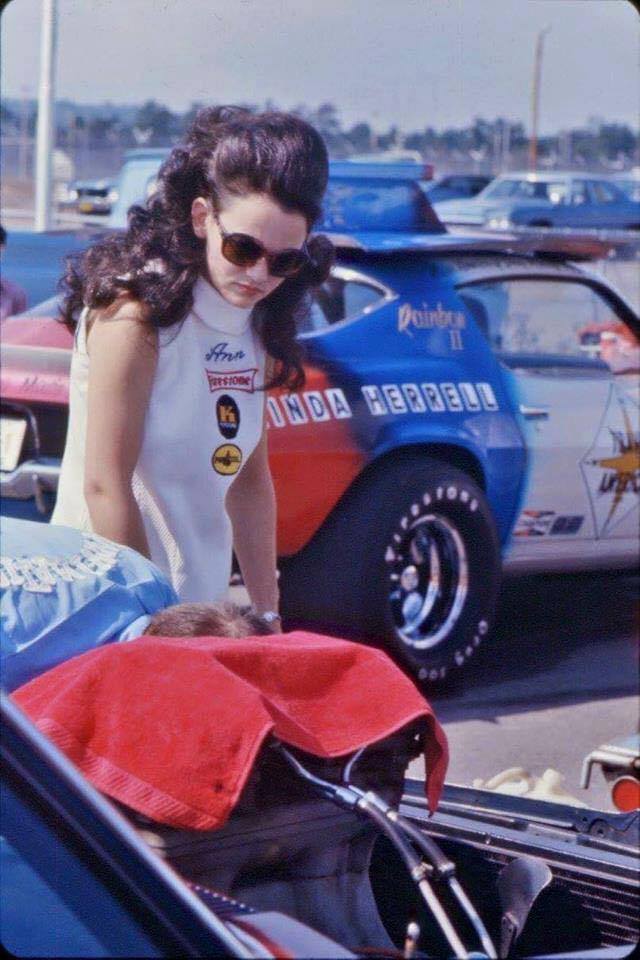
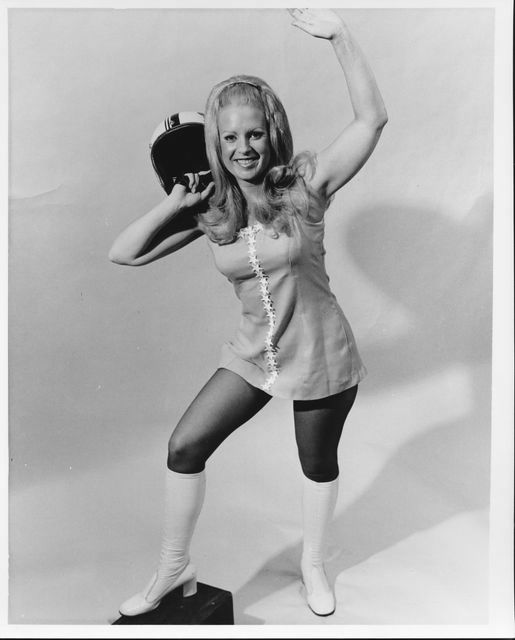
Their legacy is one of having paved the way for female racers today. We’re not 100% there yet, but there is widespread recognition that motorsports is an equal playing field gender-wise. Whether or not these women felt like they were doing something special, they were. Only a few decades before they were racing, women weren’t even allowed to take part in most motorsports. Now to this day, women can compete alongside men in practically all motorsports, but we still need to see more women getting to that point in the first place, and that starts with education, and how as a society we see women’s capabilities.
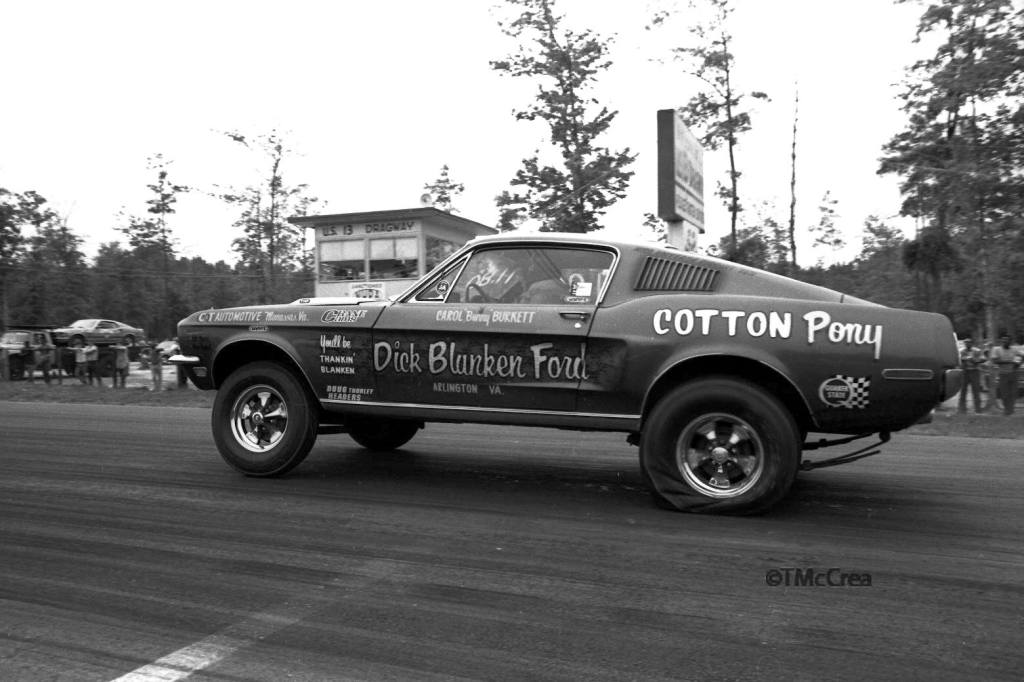

And yes, I know the mini skirts and go go boots may have been a way to oversexualise the drivers in order to bring in crowds, but this was also the fashion at the time. Imagine being able to drive a race car and beat a man in a race, bringing true meaning to ‘anything you can do, I can do better… with heels on’. We can overlook this aspect to acknowledge the fact that for many spectators, this may have been their first introduction to women in drag racing, and if it proved an important point and smashed a few stereotypes then I’m here for it. In a time when women couldn’t even apply for their own credit cards (until The Equal Credit Opportunity Act was passed in 1974) these women were pushing boundaries, and we have them to thank for that today.
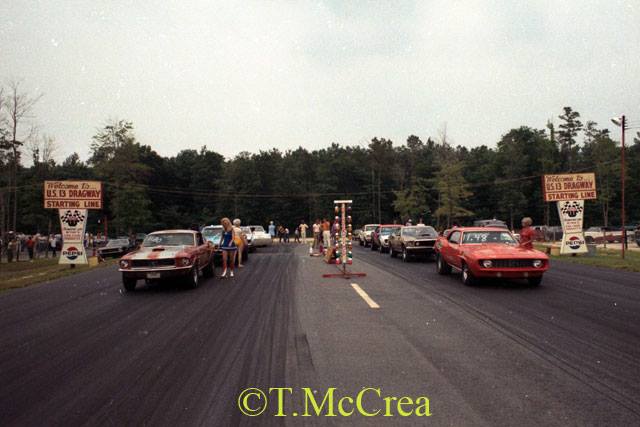
Sources and Good Reads
A Short History of Powder Puff – Women & Cars (chrislezotte.net)
Race to Equality – History of Women in Racing (sportscardigest.com)
Carol Cox: NHRA’s first class winner | NHRA

Excellent post. All those miniskirts, Go Go Boots and hairdos bring back memories from my adolescence. We didn’t hear much about women in motorsports back then. We have a lot of those old cars, and a few of the old gals around from those days. In our sun-soaked, dry climate, the cars have fared better than the girls.
LikeLiked by 1 person
Great article. See you on the strip in a few weeks. Looks like you have some big boots to fill to continue the legacy these amazing ladies started 👍😀.
LikeLiked by 1 person
Don’t you mean tall boots?😂see you soon!
LikeLike
haha – I so nearly said that 🤣
LikeLike
What a great article. It’s incredible the cars these ladies got to race. The cars dreams are made of now. 69 ZL1 Camaro, Super Cobra Jet Mustang among others of the most coveted now. Really cool to learn drag race history. And when we race now there are some real top hitter ladies racing in every class of the north east where we attend and compete.
LikeLiked by 1 person
Fantastic article from a golden time !
LikeLiked by 1 person